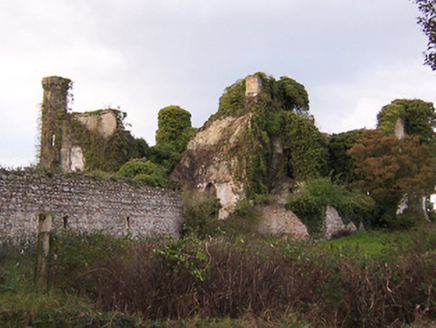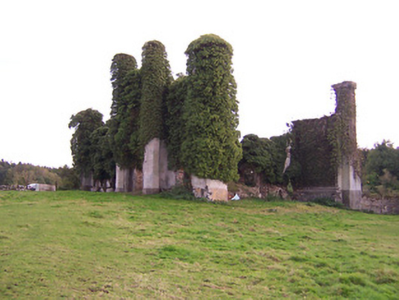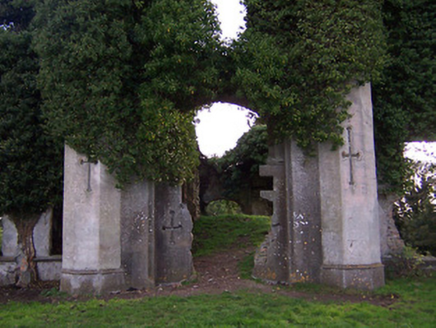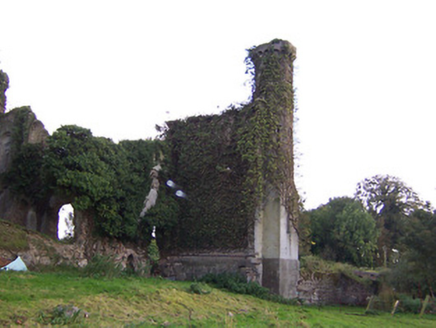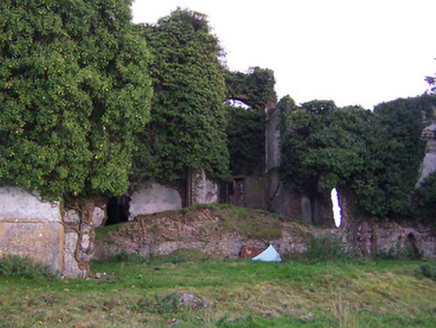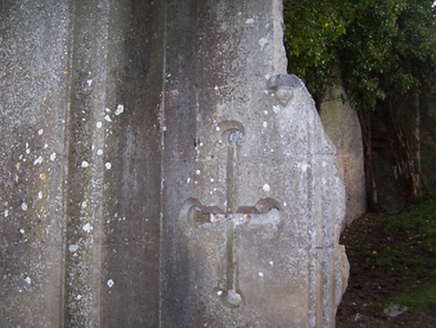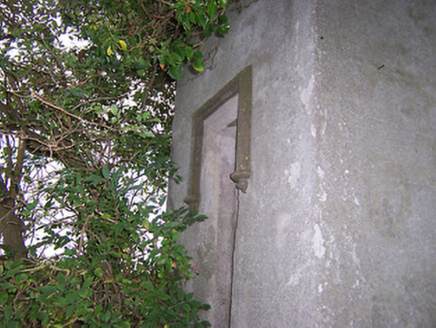Survey Data
Reg No
15402917
Rating
Regional
Categories of Special Interest
Architectural, Artistic, Cultural, Historical
Original Use
Country house
Date
1750 - 1820
Coordinates
209144, 241978
Date Recorded
10/10/2004
Date Updated
--/--/--
Description
Detached seven-bay two-storey over basement castellated country house, rebuilt c.1812 (incorporating the fabric of an earlier house built c.1750), having an advanced three-storey breakfront/gate tower (offset) to the west side of centre. Turrets on octagonal plan to the corners of advanced tower and to the west end of front façade (north), turret on square plan to the east end. Now out of use, derelict and partially collapsed to the west side. Raised battlemented parapet, roof now collapsed. Machicolated battlemented parapet to advanced tower. Roughcast cement rendered walls, now failing and exposing limestone rubble construction below, with cut stone plinth to base. Clasping buttresses between bays to the east side of tower. Extensive decoration to walls with incised cross loop motifs, cut stone quatrefoils and cut stone hoodmouldings over window openings. Walls now largely overgrown with ivy. Square-headed openings to main body of structure, originally having cut stone surrounds and cut-stone tracery. Tudor Gothic-arched doorcase to front face of tower, inset within a Tudor Gothic arched recess and originally with cut stone surrounds (now gone). Pointed-arched window over doorcase to first storey, originally with Geometric tracery. Set back from road in extensive mature grounds with remains of a walled garden and ancillary structures to the rear (15402918). Located to the east of Athlone.
Appraisal
The impressive and picturesque ruins of a large-scale Gothic Revival castellated country house. The scale and the attention to detail are still apparent despite its ruinous condition and fragments of the early cut stone detailing are still evident to a number of openings from behind the extensive ivy growth. This important Gothic Revival essay was built to designs by Sir Richard Morrison (1767-1849), who was commissioned by William Handcock to rebuild an existing house befitting of his new status as Lord Castlemaine, c.1812. This house was burnt down in 1921 and has remained a ruin ever since. These impressive and romantic ruins have been much photographed since and a picture of the remains featured on the cover of the U2 album ‘The Unforgettable Fire'. These ruins have now become almost a place of pilgrimage for U2 fans and the interior walls are now covered with graffiti relating to the band, giving this site a new cultural significance.
